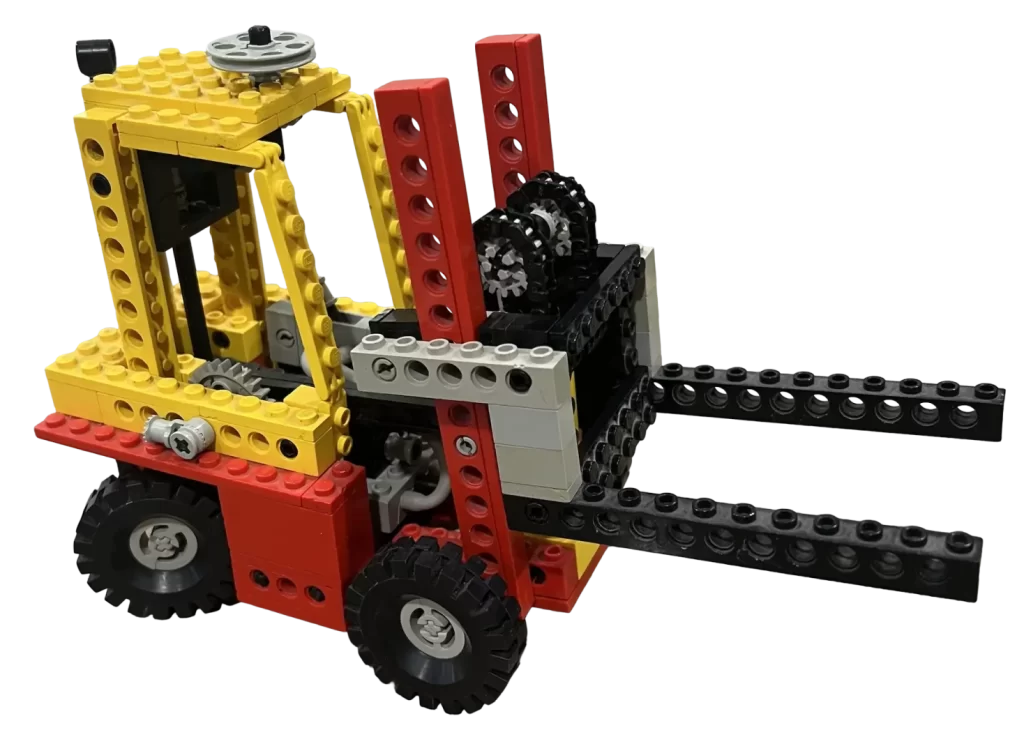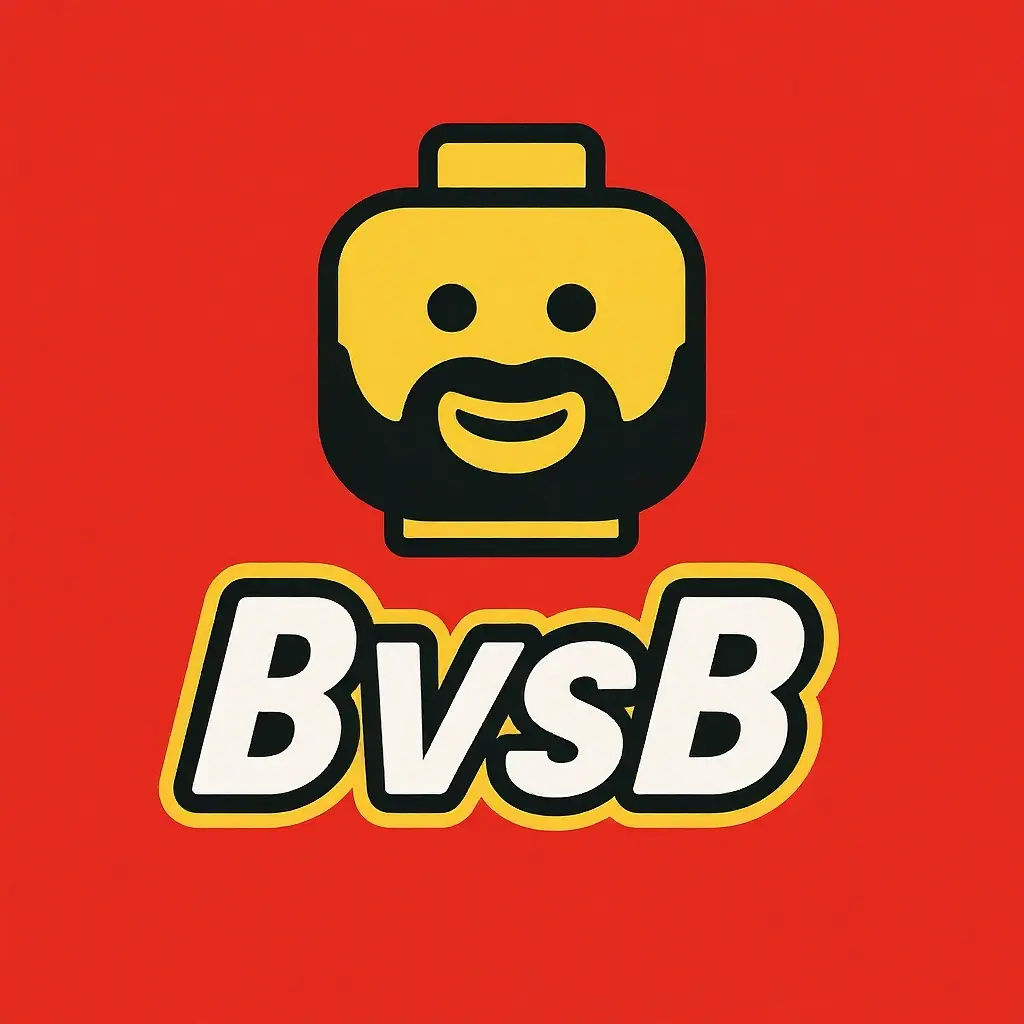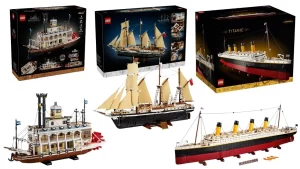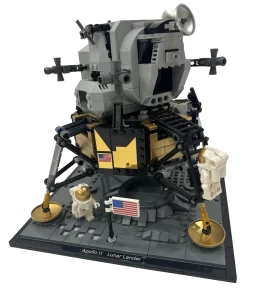
When I was a kid, this was the Technic set that made me fall in love with LEGO’s mechanical side. The LEGO® Technic 8843 Forklift wasn’t flashy — no motors, no giant panels — but it moved like a real machine thanks to its magical pneumatic system. For 1984, that was mind-blowing.
Disclosure: LEGO® is a trademark of the LEGO Group, which does not sponsor or endorse this site. Affiliate links may earn a small commission at no extra cost to you.
Quick Facts
- Set Number: 8843
- Theme: Technic
- Released: 1984
- Piece Count: 309
- MSRP (original): Around $25 USD
- Notable Feature: LEGO’s first-generation pneumatic cylinder
What’s in the Box & Build Flow
Inside, you got mostly Technic beams, a few gears, and that iconic bright-yellow color scheme. The star of the show, of course, was the pneumatic system — a hand pump, tubing, and a small cylinder that lifted the forks with a smooth, hissing realism you could feel.
Techniques & Details
The 8843 was an early masterclass in mechanical simplicity. The front lift mechanism used linkages and a pivoting arm powered by the pneumatic cylinder. The hand pump mounted neatly on the back looked like a real hydraulic control.
Display & Play Value
Let’s be honest — this set was more tinker tool than display piece. But that’s exactly what made it magical. As a kid, I’d spend hours experimenting with the pump and hoses, pretending I was running a tiny warehouse.
Comparisons
It’s fun to compare it to later pneumatic sets like the LEGO 42053 Volvo EW160E or the LEGO 42144 Material Handler. Those modern versions are far more complex but trace their DNA right back to this classic.
Who It’s For
If you’re into retro Technic or want to understand LEGO’s early engineering DNA, this is a must-build. Collectors of vintage sets will appreciate how tactile and well-designed it still feels today.
Pros & Cons
- Pros: First-gen pneumatic system that still feels cool; clever steering; pure mechanical charm.
- Cons: Limited play functions; hoses may age; hard to find complete sets.
Final Thoughts
There’s a special kind of joy in revisiting a set like this. It reminds you that LEGO Technic didn’t need thousands of pieces to impress — just smart design and a bit of air pressure magic. Would I recommend it today? Absolutely, especially if you love vintage engineering and want to see where modern Technic pneumatics began.




